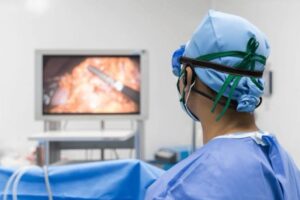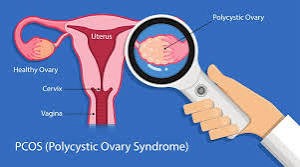In recent years, laparoscopic surgery has revolutionized the field of gynecology, offering patients a minimally invasive option for diagnosing and treating various conditions. This advanced surgical technique involves small incisions, a camera, and specialized instruments, providing a less intrusive alternative to traditional open surgery. Below are the top five benefits of laparoscopic surgery for gynecological conditions.
1. Minimally Invasive Procedure
Laparoscopic surgery is renowned for its minimally invasive nature. Traditional open surgeries require large incisions, which can lead to significant pain and a longer recovery period. In contrast, laparoscopic surgery involves tiny incisions, typically less than an inch long. Through these small incisions, surgeons can insert a laparoscope—a thin tube with a camera—and other specialized instruments to perform the procedure. This minimally invasive approach results in:
- Reduced Pain: Smaller incisions mean less trauma to the body, leading to significantly less postoperative pain.
- Lower Risk of Infection: The reduced size of the incisions minimizes the risk of infections and other complications.
- Minimal Scarring: Patients experience minimal scarring, which is not only aesthetically pleasing but also contributes to a quicker recovery.
2. Shorter Recovery Time
One of the most appealing benefits of laparoscopic surgery is the significantly shorter recovery time compared to open surgery. Patients can often return to their daily activities much sooner. Key points include:
- Quick Discharge: Many patients can go home the same day or the day after the surgery.
- Rapid Return to Normal Activities: Depending on the procedure, patients can often resume work and normal activities within a week or two, compared to several weeks or even months with traditional surgery.
- Less Need for Pain Medication: Due to the reduced pain, patients typically require fewer pain medications, which can decrease the risk of dependency and side effects.
3. Enhanced Precision and Visualization
Laparoscopic surgery provides surgeons with an enhanced view of the pelvic organs. The laparoscope, equipped with a high-definition camera, projects magnified images onto a monitor, allowing for:
- Better Visualization: Surgeons can see the organs and surrounding structures in great detail, which is particularly beneficial in complex cases.
- Improved Precision: The enhanced view allows for more precise movements and manipulation of tissues, leading to more effective treatment outcomes.
- Reduced Blood Loss: The precision of the procedure minimizes damage to surrounding tissues and reduces blood loss during surgery.
4. Lower Risk of Complications
The advanced technology and techniques used in laparoscopic surgery contribute to a lower risk of complications. These include:
- Decreased Risk of Adhesions: Adhesions, or scar tissue that forms between internal organs, are less common with laparoscopic surgery compared to open surgery.
- Reduced Incidence of Hernias: Smaller incisions lower the likelihood of hernias developing at the surgical site.
- Fewer Postoperative Complications: Patients are less likely to experience complications such as infections, deep vein thrombosis (DVT), and pulmonary issues.
5. Versatility in Treating Various Conditions
Laparoscopic surgery is versatile and can be used to treat a wide range of gynecological conditions, including:
- Endometriosis: Laparoscopy allows for the diagnosis and removal of endometrial tissue with minimal damage to surrounding tissues.
- Fibroids: Myomectomy, the removal of fibroids, can be performed laparoscopically, preserving the uterus.
- Ovarian Cysts: Cystectomy, the removal of ovarian cysts, is less invasive and promotes quicker recovery.
- Hysterectomy: Laparoscopic hysterectomy offers an alternative to traditional open surgery, with benefits such as reduced pain and faster recovery.
- Pelvic Organ Prolapse: Laparoscopic techniques can be used to repair and support pelvic organs that have prolapsed.
Contact Dr. Aneeta Talwar
If you’re considering laparoscopic surgery for a gynecological condition, consult with Dr. Aneeta Talwar, a highly experienced Consultant in Obstetrics & Gynecology and a specialist in Laparoscopic & Endoscopic Gynecological Surgery. Dr. AneetaTalwar is dedicated to providing personalized care and utilizing the latest surgical techniques to ensure the best possible outcomes for her patients.






